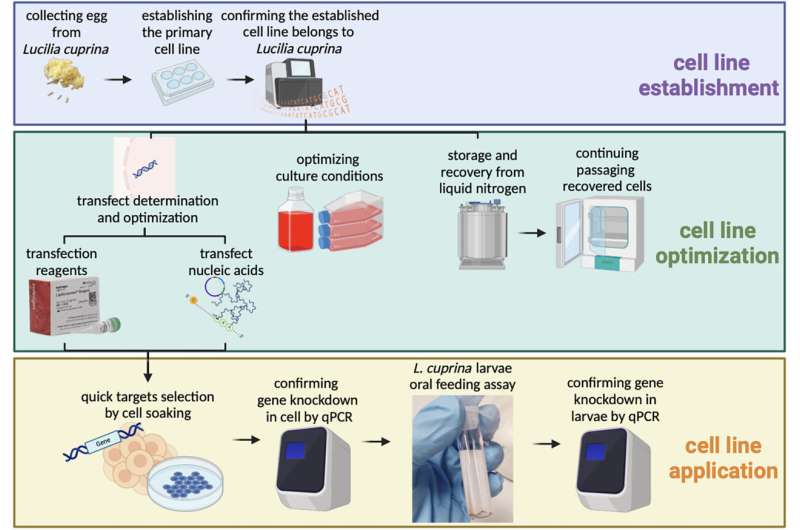This article has been reviewed according to Science X's editorial process and policies. Editors have highlighted the following attributes while ensuring the content's credibility:
fact-checked
peer-reviewed publication
trusted source
proofread
Using RNA technology to develop a chemical-free way for controlling flystrike in sheep

A chemical-free method of controlling flystrike in sheep is a step closer, according to University of Queensland research.
Queensland Alliance for Agriculture and Food Innovation Research Fellow Dr. Karishma Mody and Ph.D. candidate Yunjia Yang are using the innovative RNA technology to combat sheep blowfly, a major disease and welfare issue for sheep.
The research is published in Pest Management Science.
"It costs nearly $280 million dollars a year in labor and chemical treatments to keep flystrike under control in Australia," Dr. Mody said.
"When introduced to the sheep blowfly diet, these sustainable double stranded RNA (dsRNA) molecules we've designed affect the way the insect grows."
Dr. Mody said the next challenge was to identify target genes that can be silenced by the dsRNA to slow insect growth and potentially kill the blowfly.
"Three of the 12 genes screened gave promising results," she said. "We have established that RNA inference (RNAi) has the potential to control pests which affect livestock by regulating the pest's growth and development.
"The idea came through my work with Professor Neena Mitter who focuses on RNAi-based bio-insecticides to control crop pests and pathogens.
"Along with Professor Tim Mahony, we began to explore whether we can use the same approach for animal health."
However, Dr. Mody said they had identified challenges that warrant further research.
"dsRNA can easily degrade because of the diet of sheep blowfly, so we are working on particle-based delivery platforms to help improve its stability for real world application," she said.
"Australia is one of the world's leading wool producers, so it's fitting that we lead the way with innovative research to develop better control measures for pests.
"There's also potential for this method to be used on other pest problems in livestock, including cattle ticks and buffalo fly in cattle.
"The other positive is that this proposed method is sustainable, non-toxic and has minimal associated resistance issues."
More information: Yunjia Yang et al, The use of cell and larval assays to identify target genes for RNA interference‐meditated control of the Australian sheep blowfly (Lucilia cuprina), Pest Management Science (2024). DOI: 10.1002/ps.8190
Journal information: Pest Management Science
Provided by University of Queensland





















